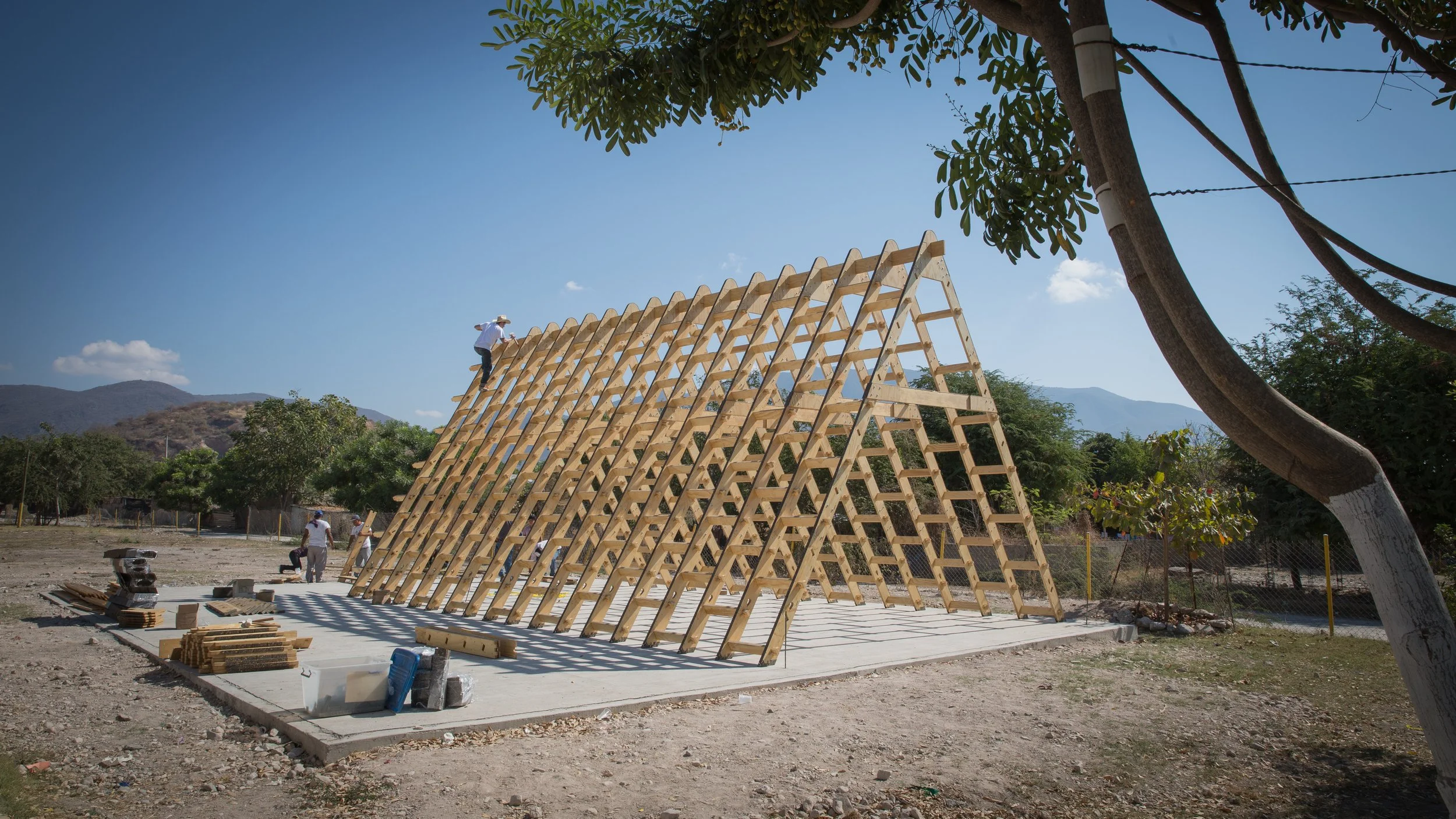Immigrant Cultural Pavilion
Architecture
Year: 2014-2018
Status: Completed
Locations / Year:
Tijuana, Chihuahua, 2014
Ciudad de México, 2016
Iguala, Guerrero, 2017
Tapachula, Chiapas, 2017
Photography: Luis García, Airscrew Film, Tuux.
Developed for the border city of Tijuana in northern Mexico, the pavilion is the venue for a series of workshops and lectures for the rapidly growing community of deported Mexican and Central American migrant workers that the US government deports every day to that city.
The figures of deportations from the US are staggering, with approximately 1.5 million people deported in the last five years, a tenth of which are children left at the Mexican side of the border without the knowledge of their families or any adult supervision. Most of the deported individuals are not criminal in any other sense than being in the US illegally.
The themes touched upon in the activities that happen in the pavilion include creative industries entrepreneurship, arts and crafts, social empowerment, film and radio, among others. The cultural program uses education, culture and art as tools of social transformation, offering the deported a space to teach the trades they learned in their years abroad, as well as connecting to new social groups and NGOs.
The pavilion is transported in a small trailer that was custom build and designed for the project, and installed in only one day. Manufactured in pine plywood, recycled plastic boards and steel fasteners, the pavilion is assembled without special tools or even electricity, allowing the host community to participate in its construction, use and care.
The Immigrant Cultural Pavilion is a temporary structure developed by Tuux for the Mexican Culture and Arts Council (CONACULTA).


















